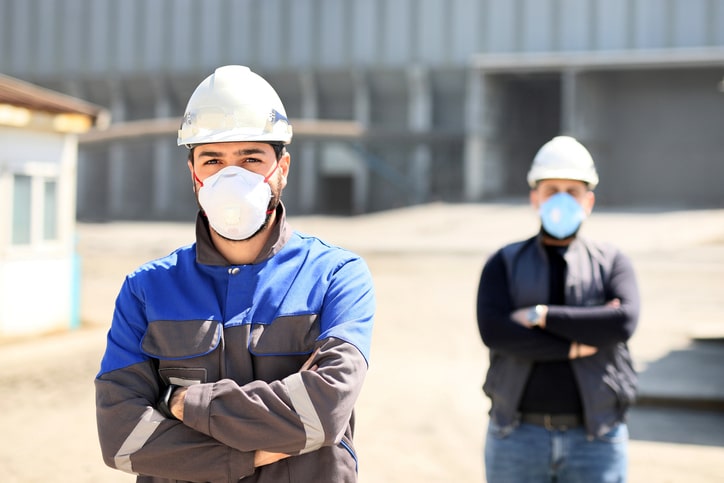- Home
- Loss Control
- Loss Control Insights
- How to Develop a COVID-19 Preparedness Plan for Your Job Site
Due to COVID-19, construction firms have temporarily changed the way they operate to remain committed to safety. Many have created new policies to ensure crews work in a way that protects them and the public. But the most effective way to protect workers is by creating a preparedness plan (also referred to as an exposure control plan). A comprehensive plan includes the following steps:
Designate a COVID-19 Officer
Choose a reliable worker to enforce policies and inform others of updates. Each job site should have a dedicated officer.Practice Social Distancing
Modify work schedules to stagger work, provide alternating workdays or extra shifts to reduce the total number of workers on a job site at any given time. Additionally, provide accommodations so office staff can work from home if possible.While on the job site, create at least 6 feet of space between workers. In areas where workers are forced to stand close together, put in place policies—such as limiting the number of workers allowed in an elevator at one time—to maintain social distancing. You may also want to consider organizing a plan that eliminates or greatly reduces human interaction while picking up or delivering equipment and materials.
Screen Workers
Encourage workers that do not feel well to stay home and screen all workers for a fever at the beginning of their shift. All thermometers must be no contact thermometers. Symptoms to watch for include fever, coughing, shortness of breath, chills, muscle pain, headache, sore throat, and new loss of taste or smell. Any workers who have been in close contact with someone infected with COVID-19 should not come to work.Personal hygiene
Whenever possible, provide soap and running water on all job sites for frequent handwashing. You should also increase the amount of hand sanitizing stations (with alcohol-based hand sanitizers with greater than 60% ethanol or 70% isopropanol) on your job site.Disinfect Project Sites More Frequently
Frequently clean and disinfect high-touch surfaces on job sites and in offices, such as shared tools, machines, vehicles, handrails, doorknobs and portable toilets. Disinfectants should be available to workers throughout the job site.Respiratory Protection
If workers need to be near each other to perform tasks, they should wear masks as recommended by the CDC.Training
Above all, train workers so they are aware and understand the guidelines outlined above. Make sure they have the most recent information on control measures, such as social distancing, handwashing and disinfecting high-touch surfaces.More Resources:
Get in touch
Need help? We’re here for you! Whether you have questions or need personalized assistance, your local office is ready to support you.
Loss Control Insights
Stay informed with the latest news and receive actionable safety tips, all carefully curated by our team of experts.
